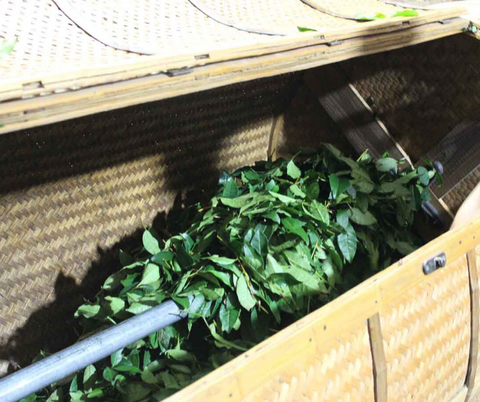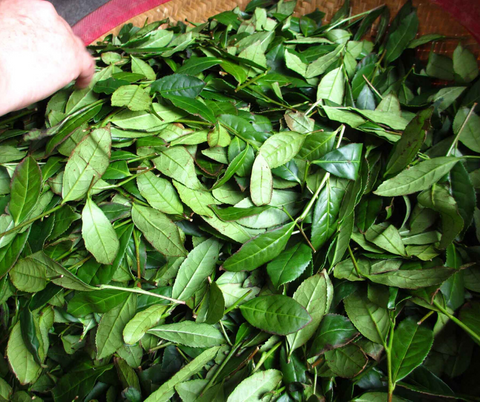Most tea producing countries largely specialize in producing one kind of tea (and many of these are excellent). China is different. It has the knowledge, the history, the location, and the ability to make a seemingly endless and evolving variety of teas. With so many options, I’m interested in “why” tea producers choose their teas and “how” they choose to make them. I asked Mr. Tang why he makes “Golden Buddha”. He said because people like it. He is wise.
“Golden Buddha” is a black tea from the Anxi region of Fujian province. The tea cultivar (named “Mingke 1”) originated in Anxi and is commonly grown there. Mr. Tang gave it the name Golden Buddha because the cultivar is a hybrid of Tie Guan Yin (Translation: Iron Goddess of Mercy) and Huang Jin Gui (Translation: Yellow Gold) and Buddhism is popular in the region. I was scheduled to be there this spring to witness the making of Golden Buddha and gain some insight into tea production, but Covid-19 cancelled those plans. Mr. Tang is old school and doesn’t take pictures, so there are no photos to share. But my friend described tea making this way, “Check what material you got and watch the weather before making the decision.”

Tea fields in Fujian
Two ideas in particular stood out to me when we discussed this tea on my last visit (though these lessons could apply to other teas). The first was finding the right source material. Not all tea makers grow their own tea, a practice that is becoming more common and opening up opportunities to new talent. When searching for the right location for leaf material, he checks the soil surrounding the plants for life, such as earthworms. As my friend Daniel said, “No grass is no good.” However, if the new leaf is dark green in color, that means food is being made available to the plants and that could yield low quality tea. Mature and healthy tea plants are self-sufficient with strong roots that find their necessities deep underground. According to the “Tea Classic” book, “The best tea grows on rotten stones.” Tea plants can live hundreds of years in the right conditions…and location matters.

A close-up of the "Mingke 1" tea cultivar
The second aspect was what guided his decision-making during production. After plucking and withering, Mr. Tang applies a shaking technique typically reserved for oolong. Applying this to the production of black tea is relatively new and not common. The purpose is to improve the aroma and texture when nuance is the goal (rather than strength). The specifics for how to apply this technique are different for black tea, which should not be shaken as hard as oolong. If there were a “by-the book” method for shaking black tea it would be “two shakings for four minutes each”, but he says it’s impossible to make high-quality tea this way. For the best results, the tea requires constant guidance through a series of moments that are largely out of your control. It’s this process that attracted my attention.

Shaking the leaves
For Golden Buddha, he says the first shaking (four minutes) is used to “wake up” the leaves. This will release the aroma (sweet, floral, potent, and memorable) and cause the leaves to stiffen as water transfers from the stem. After an hour’s rest (the leaves will now be soft and yellowish from moisture loss), he will shake it again and longer this time (maybe 15-18 minutes), depending on the leaf and the weather conditions. This second shaking will cause the leaf edges to turn red, release more aroma, and cause the material to stiffen up again as more moisture travels from the stem to the leaf. He would typically let is rest overnight to become limp and ready for rolling the next day. Rolling the tea may be longer for spring leaf, lighter for old leaf. Harder on a rainy day, shorter on a summer day. But no straight answers on any day.

The edges of the leaves turn red after shaking
Tea is an end unto itself, like music. I do not consider tea “functional”, though there’s nothing wrong with using it that way. It’s easy to appreciate when we suspend our expectations of it and instead ask the makers how they make it. If you want to make Golden Buddha at home the recipe is picking -> withering -> shaking -> rolling -> oxidization -> drying. Let me know how it goes and remember to “check what material you got and watch the weather before making the decision.”
This blog was written with help from our friend Daniel Hong.
-Michael Lannier
